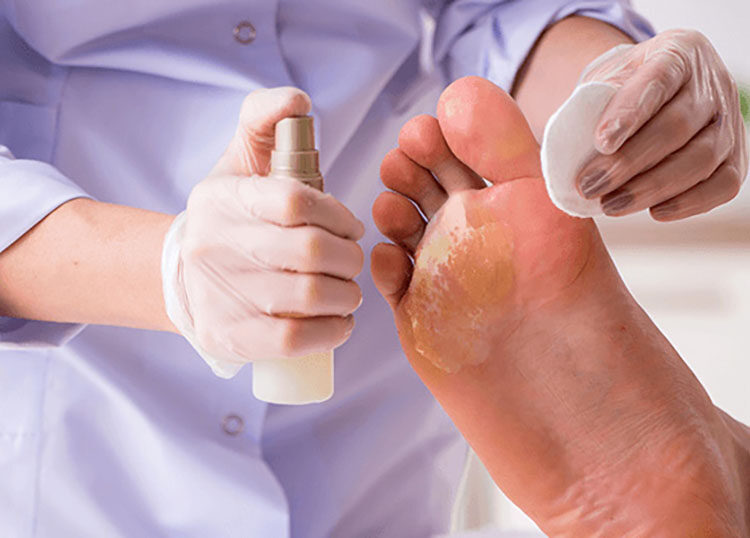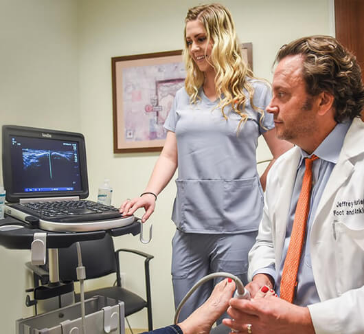
Schedule an Appointment
An infected foot is often painful and can make it difficult to walk. Foot infections can occur after an injury to your foot. Bacteria can get into a wound, such as a cut or a skin crack, and cause an infection. Common sources of foot infections include ingrown toenails and stubbing your toe, which can lead to open wounds that become infected if not properly cared for. In this case, ingrown toe infection treatment or stubbed toe infection treatment may be required by a medical professional.
Athlete's foot and toenail fungus are also common fungal foot infections that require medical foot infection treatment.
Certain medical conditions, such as diabetes mellitus, can also increase your risk for foot infections. Diabetes can cause poor blood flow and nerve damage in the feet, making it easier for infections to develop and harder for wounds to heal.
An infected foot needs to be treated to prevent complications. Left untreated, a bacterial infection in the foot can lead to cellulitis, a potentially serious skin infection that can spread to your lymph nodes and bloodstream, requiring more intensive medical intervention.
If you suspect you have a foot infection, it's crucial to seek medical attention for foot infection treatment as soon as possible. Early diagnosis and treatment can prevent the infection from spreading and causing more severe health issues. Don't let a foot infection keep you off your feet – seek professional care and ensure your feet remain healthy and infection-free.

Meet The Specialist
We practice a minimally invasive approach to your foot or ankle problem with surgery as the last option.
Choose a Location Nearest You
Frequently Asked Questions
Common causes of foot infections include cuts, scrapes, or cracks in the skin that allow bacteria to enter, ingrown toenails, stubbed toes, athlete’s foot, toenail fungus, and medical conditions like diabetes that can lead to poor circulation and nerve damage, making infections more likely.
Signs of a foot infection include redness, swelling, warmth, pain, tenderness, pus or drainage from a wound, and fever. You might also notice a foul odor, changes in skin color, or difficulty walking.
If you have an ingrown toenail infection, keep the area clean and soak your foot in warm water several times a day. Apply antibiotic ointment and cover with a bandage. Avoid tight shoes and trim your nails straight across. If symptoms persist, seek medical attention as you may need minor surgery to remove the infected part of the nail.
To treat a stubbed toe infection, clean the wound thoroughly with soap and water, apply an antibiotic ointment, and cover with a sterile bandage. Keep the area clean and dry, and monitor for signs of worsening infection. If symptoms do not improve or worsen, seek medical help.
Available treatments for foot infections include topical and oral antibiotics, antifungal medications, wound cleaning and dressing, and minor surgical procedures to drain abscesses or remove infected tissue. Severe infections may require intravenous antibiotics or hospitalization.
Seek medical help if you experience severe pain, spreading redness, swelling, fever, pus or drainage, or if the infection does not improve with home treatment. If you have underlying health conditions like diabetes, seek prompt medical attention for any signs of infection.
Prevent foot infections by maintaining good foot hygiene, keeping your feet clean and dry, wearing well-fitting shoes, avoiding walking barefoot in public places, and treating any cuts or wounds promptly. Regularly check your feet for signs of injury or infection, especially if you have diabetes.
Yes, specific risk factors include diabetes, poor circulation, weakened immune system, neuropathy (nerve damage), existing foot conditions like athlete’s foot or toenail fungus, and wearing tight or poorly fitting shoes.
If you have diabetes, it is generally not safe to treat a foot infection at home. Diabetes can cause poor circulation and neuropathy, increasing the risk of severe infections. Seek medical attention promptly for any signs of a foot infection to prevent complications.
Over-the-counter antibiotics can help with minor superficial infections but are not typically sufficient for more serious infections. If symptoms persist or worsen, it is important to seek medical treatment for prescription antibiotics and professional care.
Yes, it is advisable to avoid physical activity if you have a foot infection. Resting the affected foot can help reduce swelling and pain and prevent the infection from worsening. Follow your doctor's recommendations regarding activity levels during treatment.


